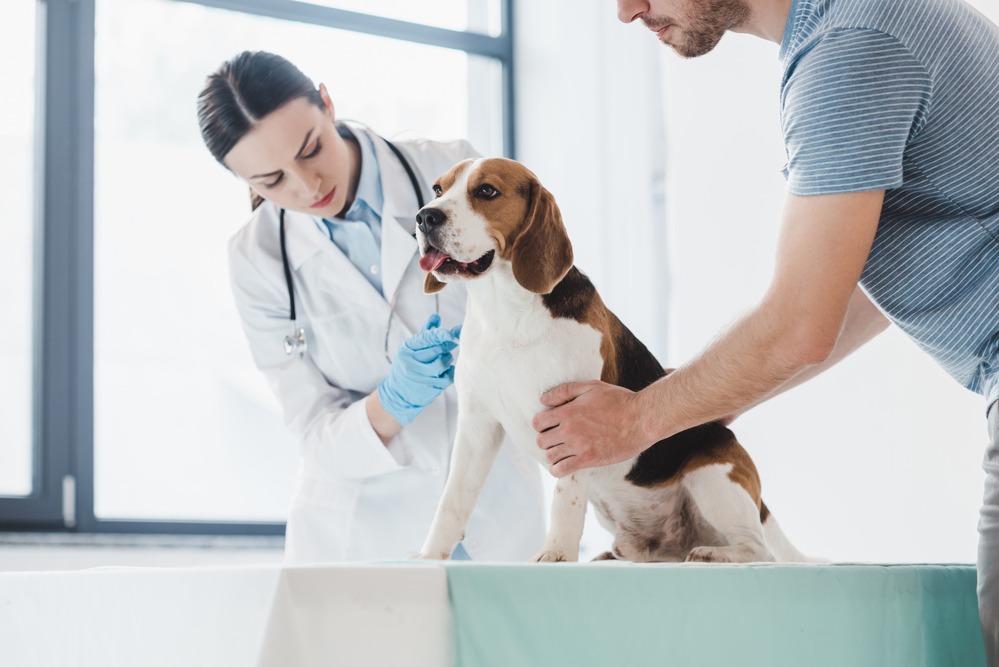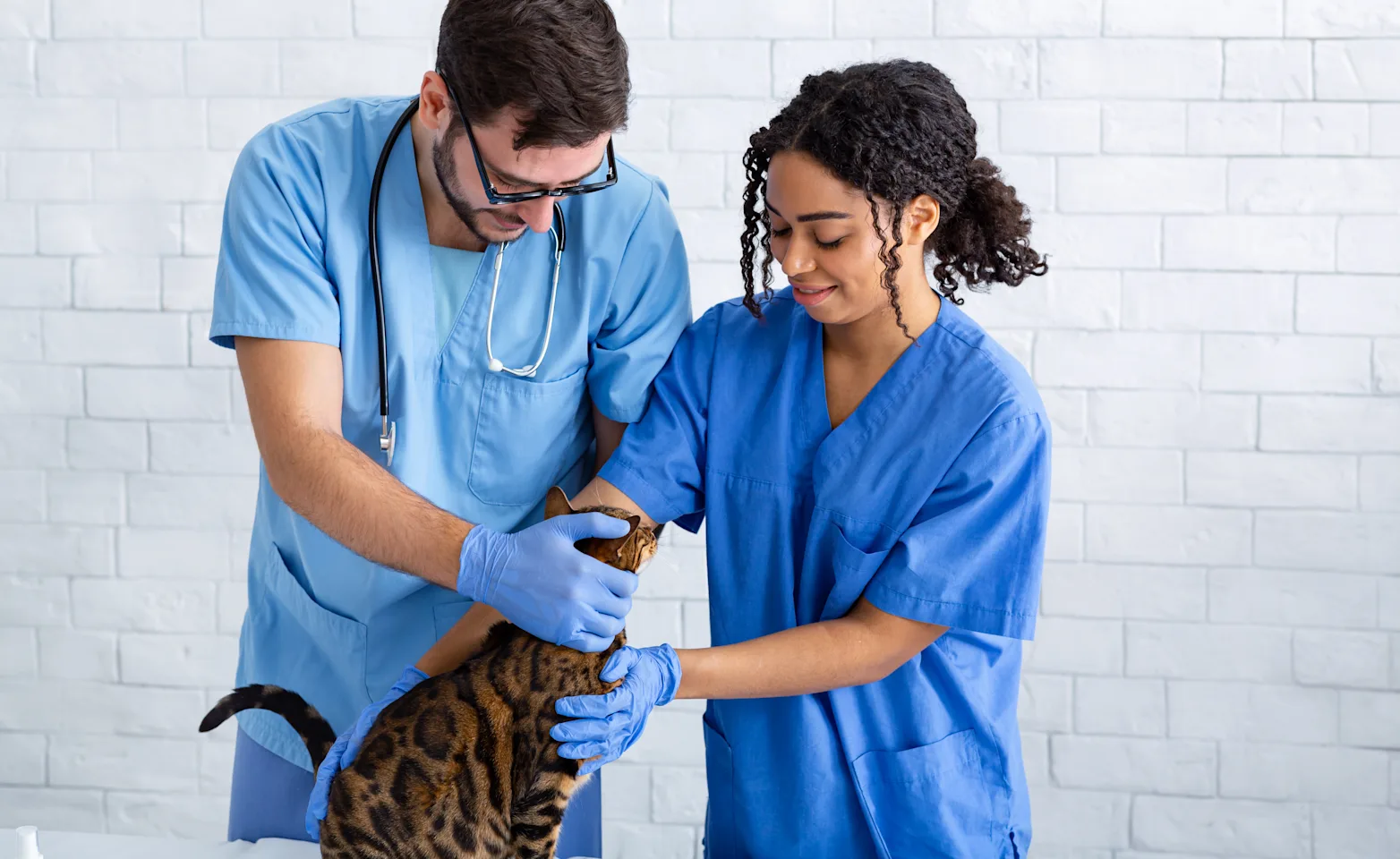What to Do If You Need an emergency vet near me Late at Night or On Weekends
What to Do If You Need an emergency vet near me Late at Night or On Weekends
Blog Article
All Concerning Veterinarian Surgical Procedure: Recognizing the Value of Professional Care for Your Animals
Vet surgical treatment is an important element of family pet health care. It incorporates various procedures, from routine elective surgical procedures to urgent interventions. Understanding the details of these surgical treatments can help pet dog owners make educated choices. The preparation, implementation, and recuperation stages are vital for making certain the well-being of pets. With correct expertise, proprietors can browse the complexities of vet treatment. What elements should be thought about before a pet dog undertakes surgical treatment?
Kinds of Vet Surgeries
When a family pet needs surgical treatment, recognizing the different kinds of vet surgeries can aid family pet proprietors make informed choices. Veterinary surgical treatments can be broadly categorized into 3 major kinds: elective, immediate, and emergency situation surgeries. Elective surgical procedures, such as spaying or neutering, are prepared treatments that are not right away lethal. Immediate surgical procedures, like those for international body elimination, need to be done quickly but are not lethal in the moment. Emergency situation surgeries, such as those dealing with extreme trauma or inner bleeding, are essential and call for prompt attention.Additionally, surgical treatments can vary in intricacy, ranging from minimally invasive laparoscopic treatments to extra substantial open surgical treatments. Each sort of surgery brings its own dangers and recuperation processes. Understanding these groups allows pet dog proprietors to participate in significant conversations with veterinarians, resulting in far better results for their cherished animals.
Preparing for Your Pet dog's Surgical procedure
Planning for a pet's surgical treatment entails a detailed list to guarantee all fundamentals are covered. Effective interaction with the veterinarian is vital for comprehending the treatment and any necessary pre-operative actions - emergency vet bellingham. Furthermore, having clear post-operative care guidelines will aid owners supply the ideal assistance for their recuperating animals
Pre-Surgery Checklist Basics
Ensuring a smooth surgical experience for a pet dog needs cautious prep work and focus to information. A pre-surgery list is vital for pet dog proprietors to comply with. First, verifying the scheduled surgical treatment date and time is vital. Owners must also verify that their pet dog has actually not eaten according to the vet's directions, generally for 8-12 hours prior to surgery. Gathering necessary medical documents, consisting of vaccination history, is important for the vet's testimonial. It is likewise recommended to prepare a comfy area in the house for the pet's recovery after surgical procedure. Lastly, owners ought to have a prepare for transportation to and from the vet center, seeing to it that the pet dog is safe and secure and comfortable throughout the trip. Following these steps can considerably improve the surgical experience.
Connecting With Your Vet

Effective communication with the veterinarian is crucial for an effective surgical experience for pet dogs. Owners ought to be prepared to discuss their pet dog's clinical history, consisting of any pre-existing conditions, medicines, and allergies. This details aids the veterinarian evaluate threats and customize the medical strategy accordingly. Furthermore, animal owners ought to ask questions concerning the procedure, anesthetic, and expected end results to guarantee they fully understand the procedure. Clarifying any kind of questions can alleviate stress and anxiety for both the animal and the proprietor. It is likewise crucial to connect any behavior adjustments or issues observed in the pet dog leading up to the surgical procedure. Eventually, clear dialogue fosters count on and partnership, making certain that pets obtain the best possible treatment throughout their medical journey.
Post-Operative Care Directions
After reviewing the surgery with the vet, pet dog owners need to concentrate on post-operative care directions to help with a smooth recuperation for their animals. These instructions commonly include keeping an eye on the medical website for indicators of infection, such as redness or discharge. Pet dogs might require to be kept calm and confined to avoid excessive activity that can disrupt recovery. Pain administration is essential, so proprietors must comply with the veterinarian's guidance on providing medicines. Additionally, dietary limitations may be encouraged to prevent gastrointestinal distress. Normal follow-up appointments are crucial to guarantee correct recovery and deal with any worries. By adhering to these post-operative treatment instructions, pet dog proprietors can substantially add to their pet's recuperation and total wellness.
The Surgery Explained
The surgery for animals incorporates essential steps that ensure their safety and security and recovery. Pre-surgery preparations are important for reducing threats, while post-operative care guidelines play an important role in advertising recovery. Comprehending these components assists pet proprietors browse the surgical experience a lot more properly.
Pre-Surgery Preparations
Prior to an animal goes through surgical treatment, a number of vital preparations need to happen to ensure a secure and effective treatment. Initially, an extensive veterinary evaluation is vital to analyze the animal's general wellness and determine any kind of prospective dangers. This might include blood tests, imaging, or other diagnostics. The veterinarian will certainly also review anesthetic options tailored to the pet's specific requirements. Additionally, pet owners are usually instructed to withhold food and water for a specified time before surgical treatment to minimize the danger of problems during anesthesia. It is essential for owners to offer a complete medical history, consisting of any type of medicines or allergies, ensuring the medical group has all required information. Correct interaction and adherence to pre-surgery standards can significantly improve the outcome of the procedure.
Post-Operative Treatment Standards
Proper post-operative care is important for ensuring a family pet's healing following surgical treatment. After the treatment, pets need to be kept track of closely for any kind of indicators of complications, such as extreme blood loss, swelling, or unusual actions. It is vital to comply with the veterinarian's guidelines concerning drugs, including painkiller and antibiotics. Animals should be maintained in a silent, comfy setting to lower tension and advertise healing. Limiting task is vital; short, leashed walks may be essential, however jumping or running ought to be stayed clear of. Regular follow-up appointments should be scheduled to analyze the healing procedure. In addition, the surgical site needs to be kept tidy and completely dry, with any indications of infection reported to a veterinarian quickly. Sticking to these guidelines enhances recovery results.
Anesthesia and Discomfort Administration
Effective anesthesia and discomfort monitoring are essential components of vet surgical procedure, making sure that animals continue to you can try these out be comfy and risk-free throughout the treatment. Vets evaluate each pet's specific demands, thinking about variables such as age, weight, health status, and the kind of surgical treatment being have a peek at this site performed.Anesthesia protocols generally include a combination of pre-anesthetic drugs, induction representatives, and inhalant anesthetics, allowing for exact control over the pet's degree of consciousness. Monitoring throughout surgery is vital; vets continually observe essential indications to attend to any potential difficulties promptly.Pain administration strategies may entail opioids, non-steroidal anti-inflammatory drugs (NSAIDs), and anesthetics, customized to the pet's particular scenario. This multifaceted strategy assists decrease pain and advertises a smoother surgical experience. By prioritizing effective anesthetic and discomfort monitoring, veterinary experts boost the general welfare of family pets undertaking medical procedures, ensuring they receive the highest possible requirement of treatment.
Post-Operative Treatment and Healing
Adhering to surgery, the emphasis shifts to post-operative care and recovery, which is necessary for guaranteeing a pet dog's secure return to regular activities. During this period, animals need a quiet, comfy setting to help healing. Owners need to carefully monitor their family pets for any type of indications of pain or uncommon behavior.Veterinary guidelines often consist of particular directions associated with drug management, wound treatment, and nutritional adjustments. It is important to stick to these referrals to lessen complications and promote recovery. Animals might need to be restricted from vigorous tasks, such as running or leaping, throughout their recovery period (tplo surgery for dogs).Regular follow-up appointments with the vet enable monitoring of the pet dog's progression and timely changes to the treatment strategy. Giving psychological support and friendship can also enhance an animal's recovery experience, helping to alleviate tension and anxiousness. On the whole, persistent post-operative care plays a significant duty in attaining an effective recovery
Acknowledging Issues After Surgical Procedure
How can pet dog proprietors recognize difficulties after surgical treatment? Understanding of details indicators is vital for ensuring the well-being of family pets during recovery. Typical indications consist of too much swelling, soreness, or discharge at the surgical site, which might symbolize infection. In addition, relentless discomfort, indicated by whimpering or reluctance to move, must prompt instant interest. Adjustments in cravings or water consumption can additionally show issues; a decrease in these behaviors might signal pain or distress.Moreover, family pet owners need to monitor their animals for any type of uncommon habits, such as sleepiness or trouble breathing, as these can be indications of significant issues. Throwing up or diarrhea adhering to surgical procedure might call for urgent vet examination. Identifying these complications early can considerably influence a pet dog's healing procedure, stressing the importance of watchfulness and timely communication with a vet for any kind of worrying symptoms.
The Function of Vet Experts in Surgical Treatment
Vet specialists play an essential role in ensuring the safety and success of procedures for animals, specifically following surgical treatment when keeping track of and care are paramount. These professionals consist of veterinarians, vet service technicians, and support team, all of whom contribute specialized abilities to the medical process.Before surgery, vets perform thorough evaluations to assess the animal's health, making certain that any underlying conditions are taken care of. Throughout the procedure, the medical group provides anesthesia, maintains sterile atmospheres, and monitors essential indicators, all vital for decreasing risks.Post-operative care is similarly substantial; veterinary professionals observe for issues, take care of pain, and guide proprietors on recuperation practices. Their competence allows them to identify very early indications of distress or infection, guaranteeing timely intervention. Inevitably, the joint efforts of vet specialists in medical treatment cultivate a secure setting, promoting the health of animals throughout the medical journey.

Often Asked Concerns
How Do I Pick the Right Vet Doctor for My Pet?
Picking the ideal veterinary doctor entails researching credentials, reviewing reviews, and assessing the facility's environment. It is important to assess the cosmetic surgeon's experience with certain procedures and their interaction design when deciding.
What Are Usual Misconceptions Concerning Veterinarian Surgeries?
Usual mistaken beliefs about veterinarian surgical procedures include my response beliefs that they are constantly high-risk, unneeded, or for emergencies. Several pet proprietors undervalue the benefits of precautionary treatments and the skill associated with veterinary medical treatment.
Just How Much Will My Family pet's Surgical procedure Cost?
The expense of a family pet's surgery can differ significantly based on elements such as the kind of treatment, the vet's experience, and geographical place (veterinary cardiologist near me). Commonly, expenditures vary from a few hundred to a number of thousand dollars

Can My Pet Dog Eat Before Surgical Treatment?
Before surgical procedure, it is generally recommended that pet dogs avoid eating for a certain duration. This fasting aids lower the risk of difficulties during anesthetic. Proprietors need to consult their vet for precise guidelines tailored to their pet dog's needs.
What if My Animal Has Pre-Existing Wellness Conditions?
When an animal has pre-existing health and wellness conditions, it's vital for the veterinarian to examine these aspects before surgical procedure. This assessment guarantees proper safety measures are taken, reducing threats and optimizing the family pet's total security throughout the treatment.
Report this page